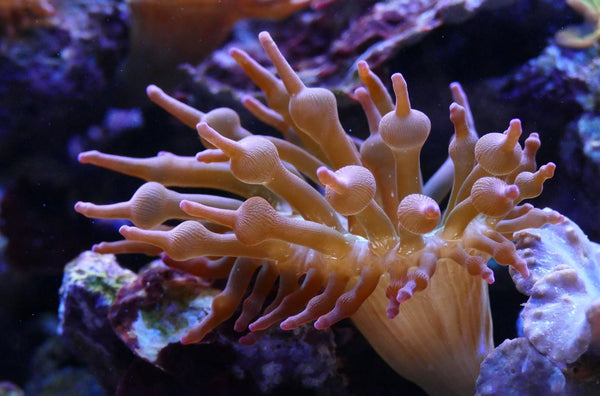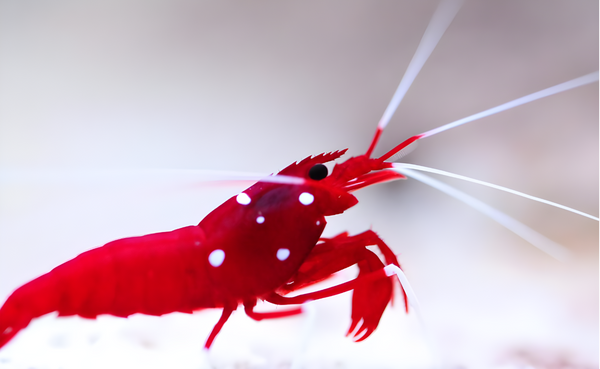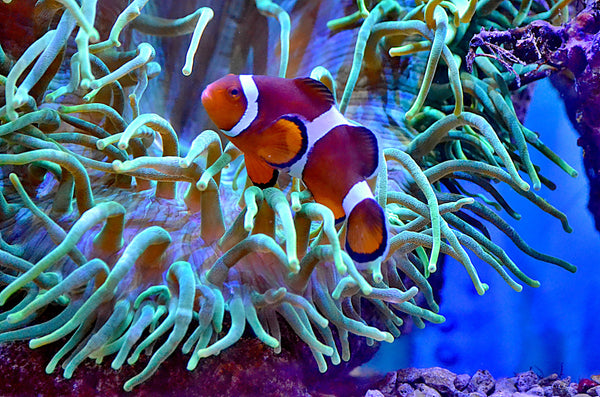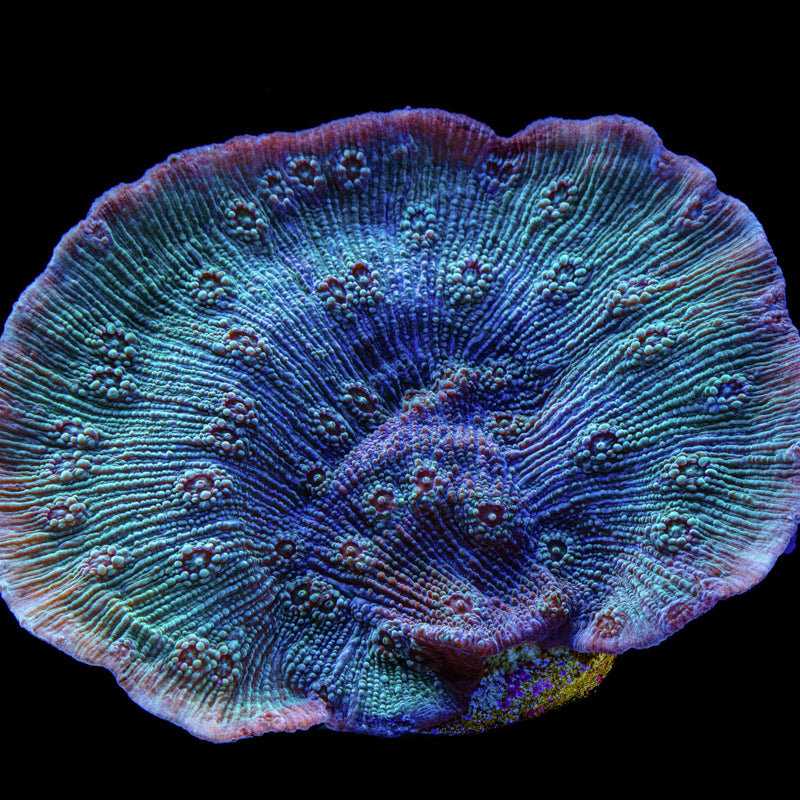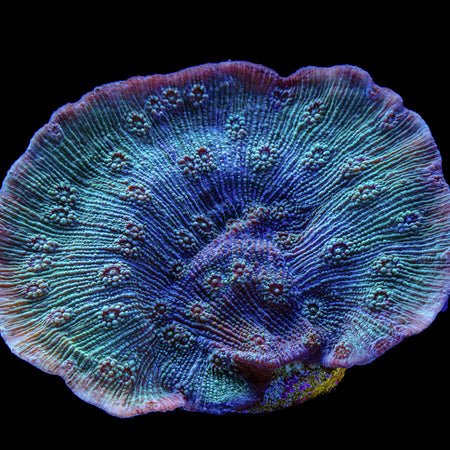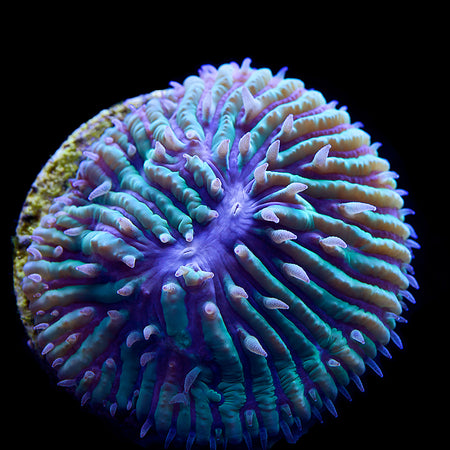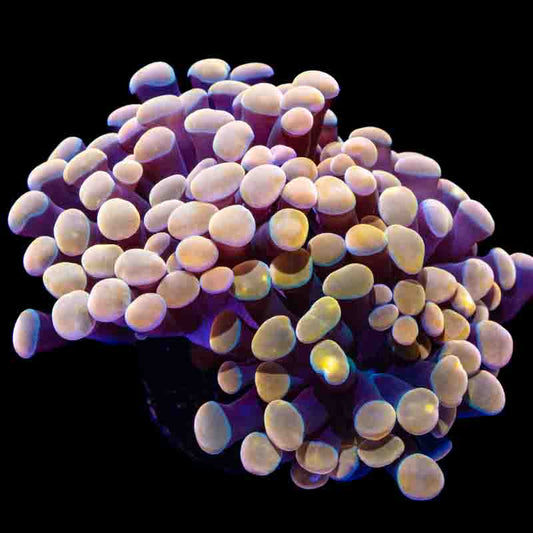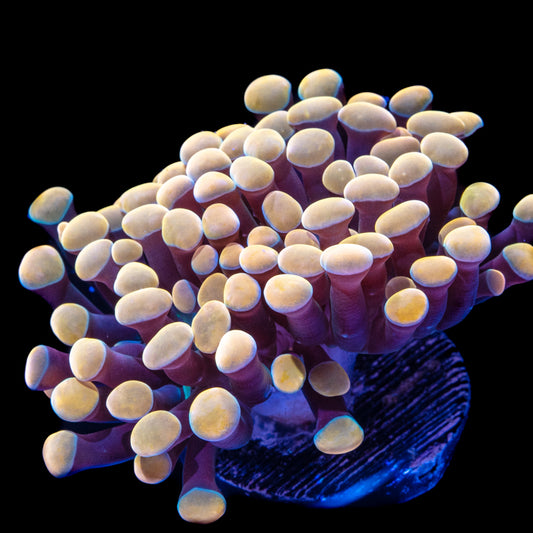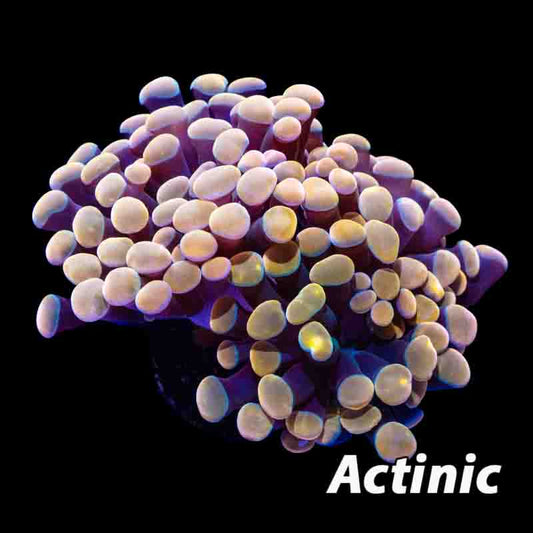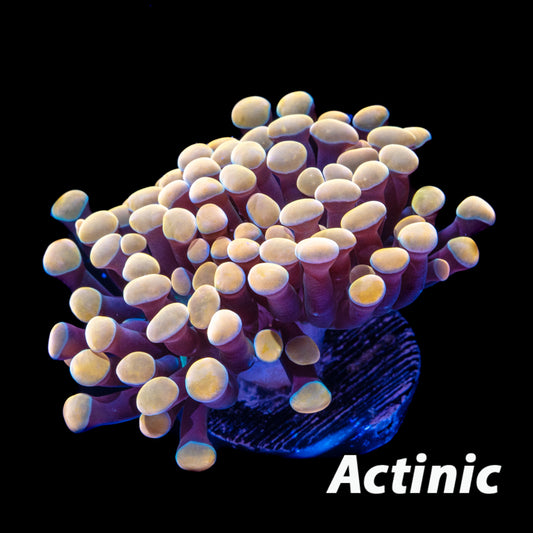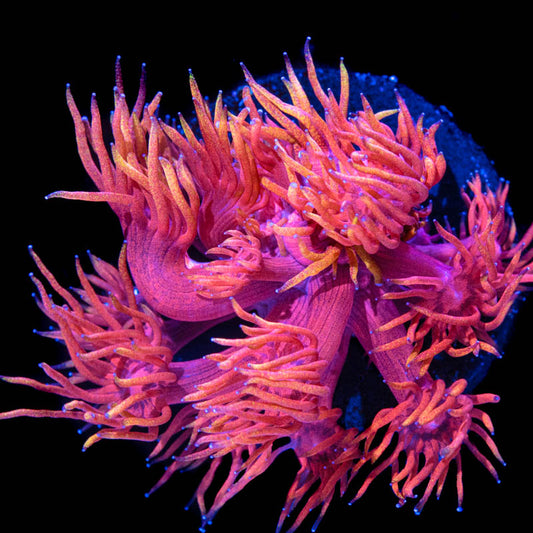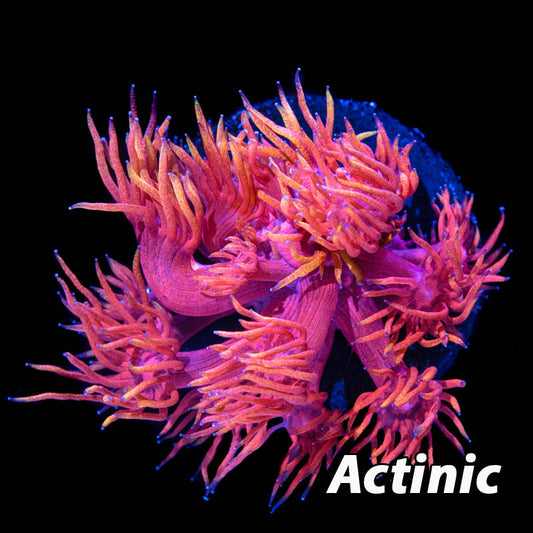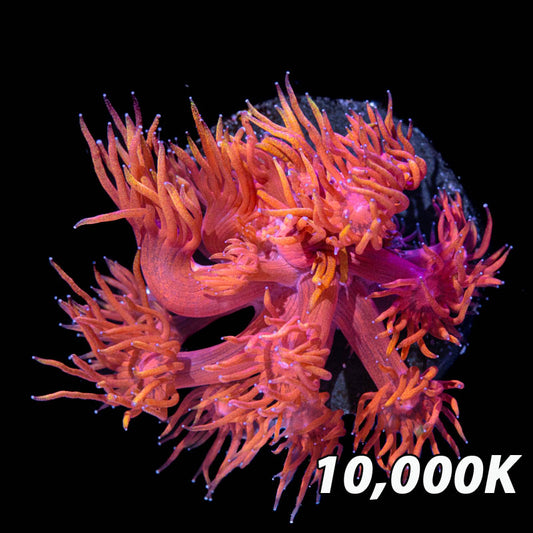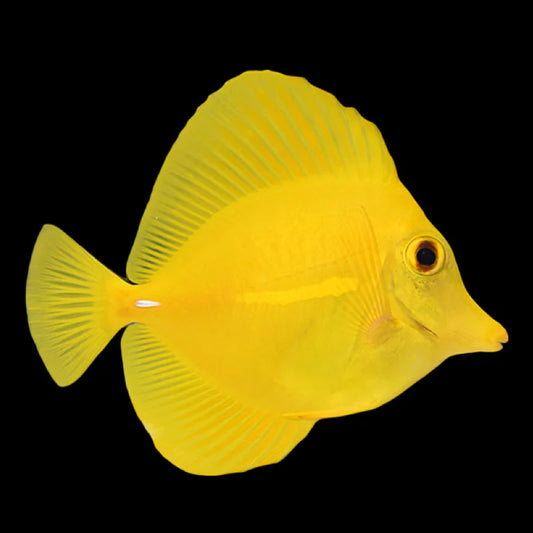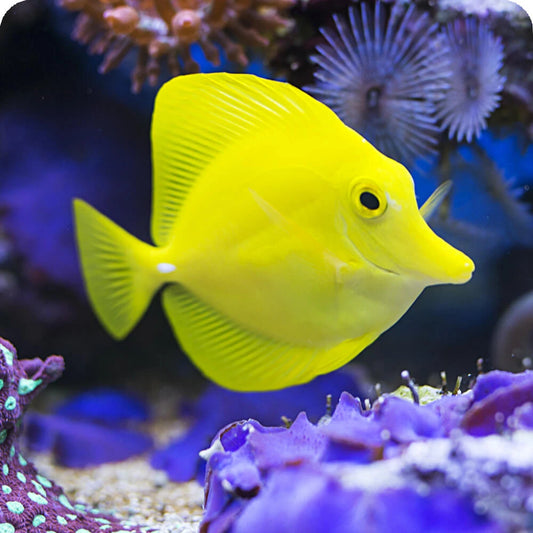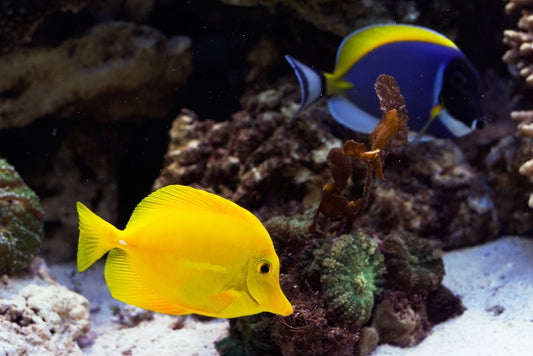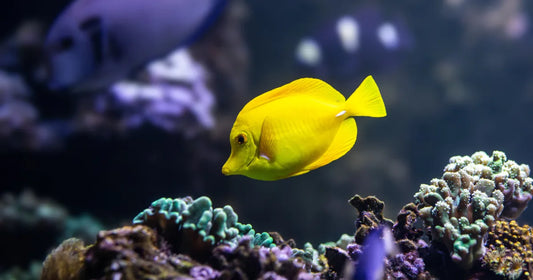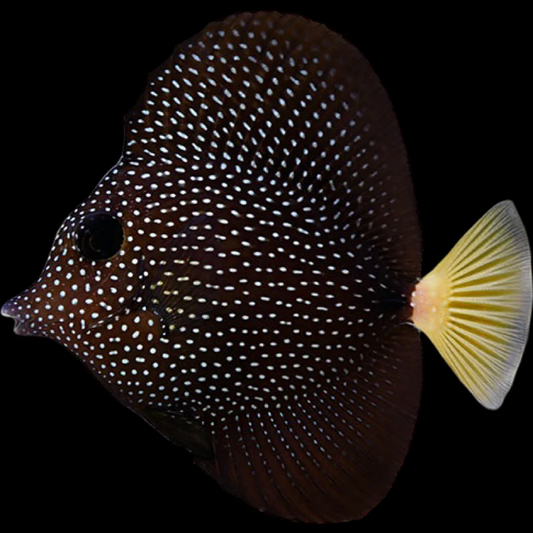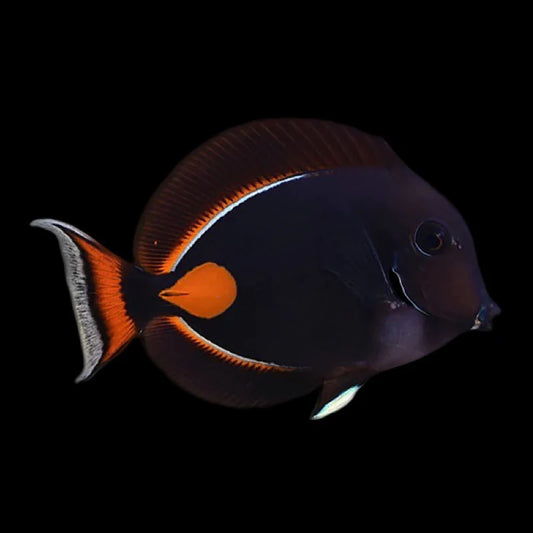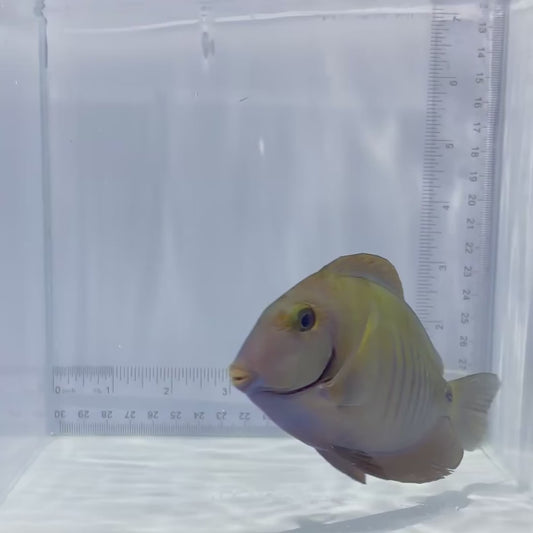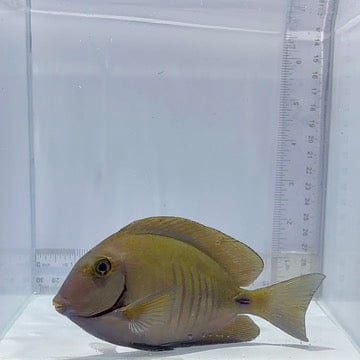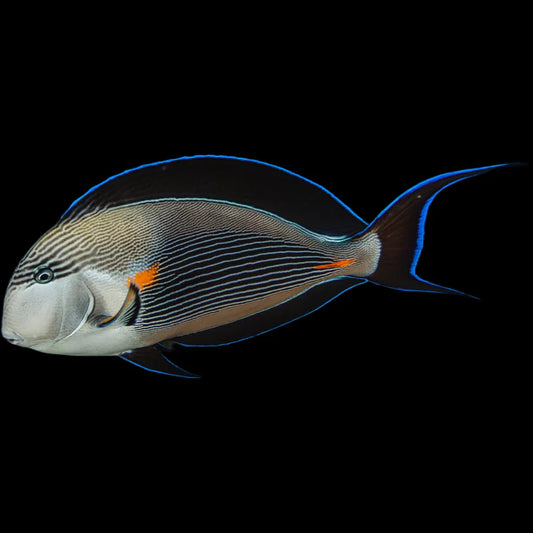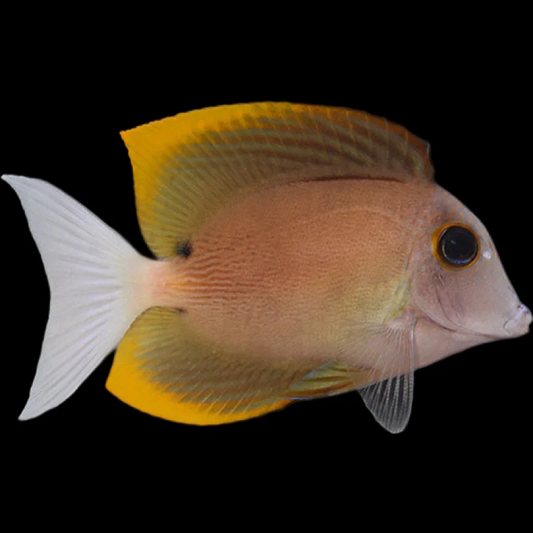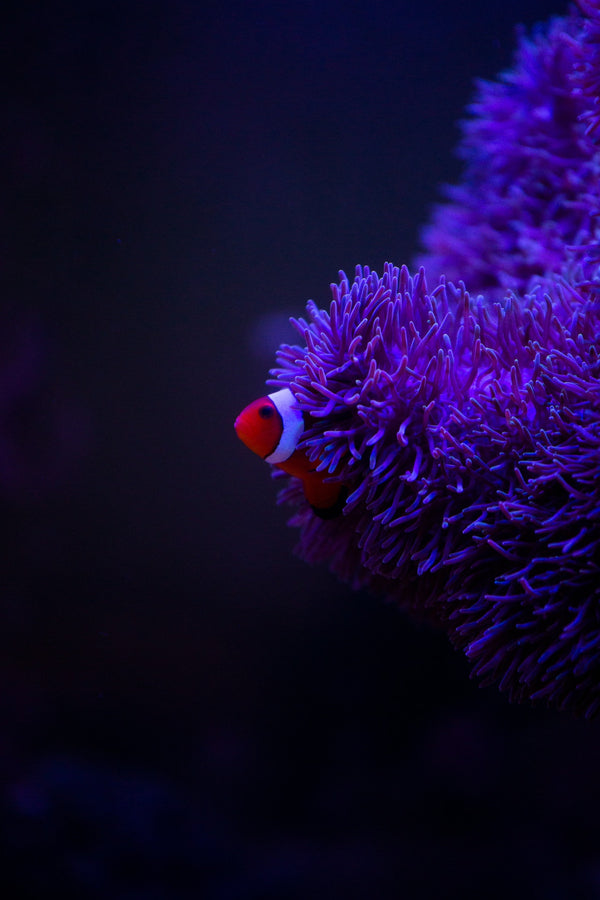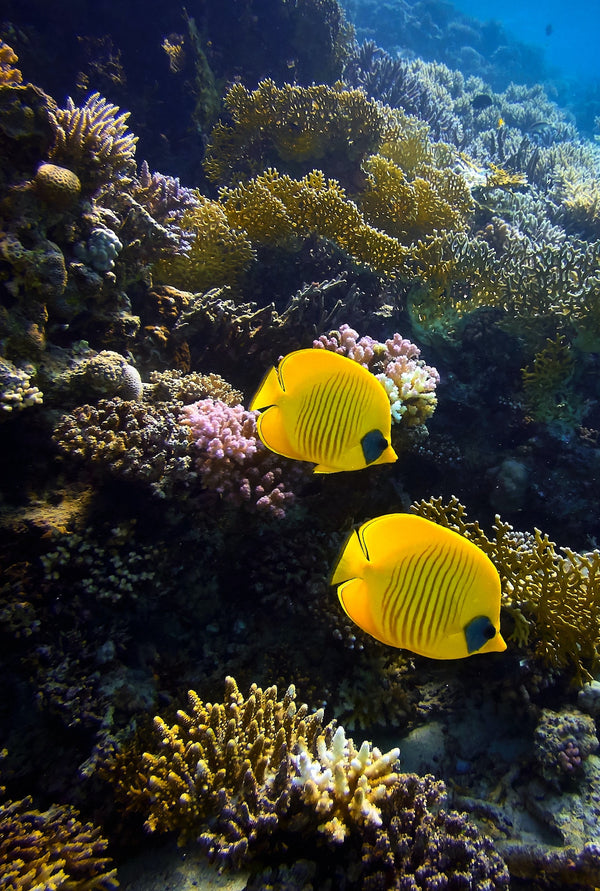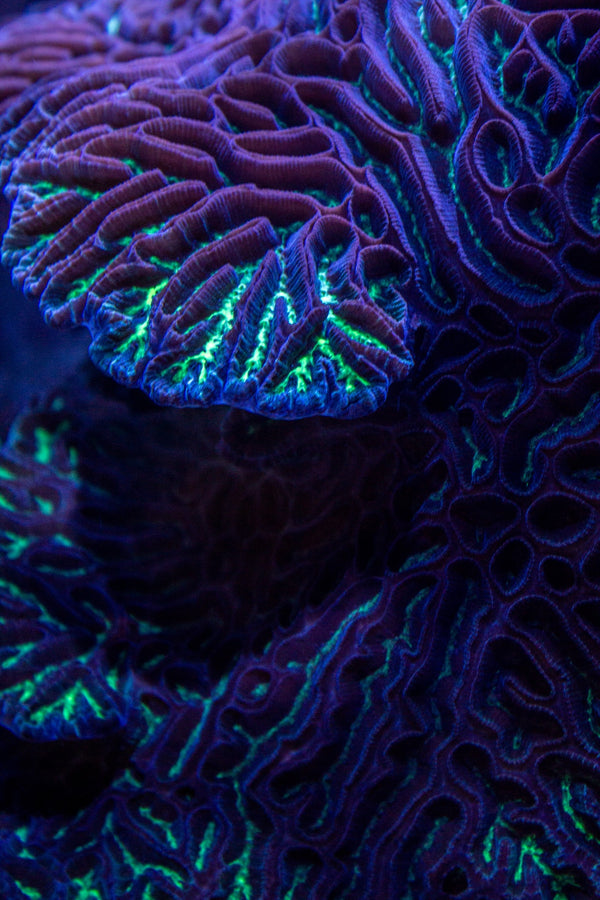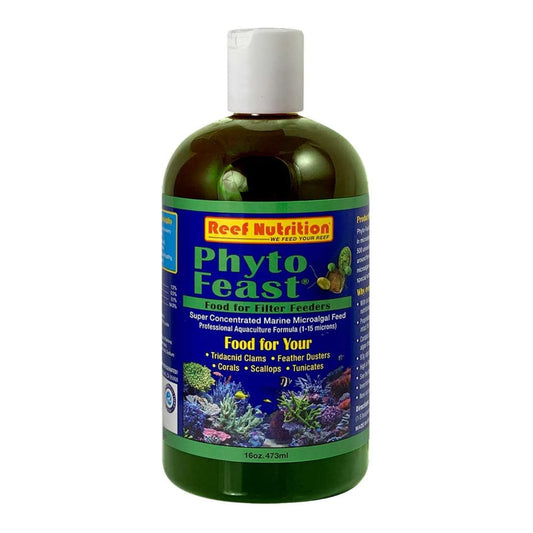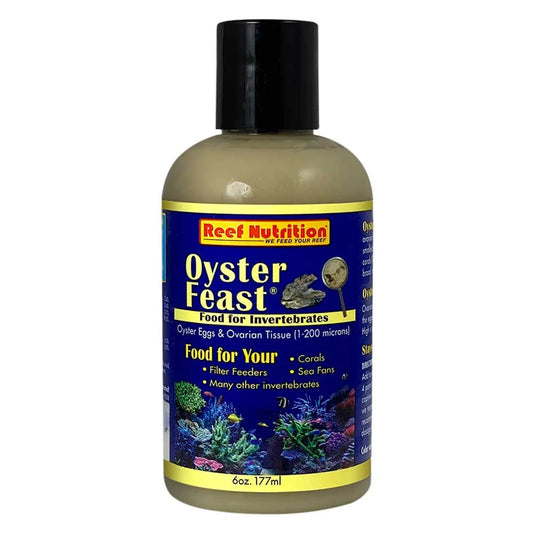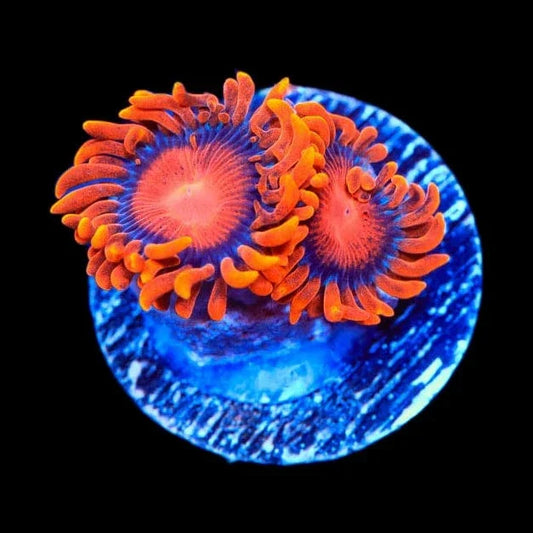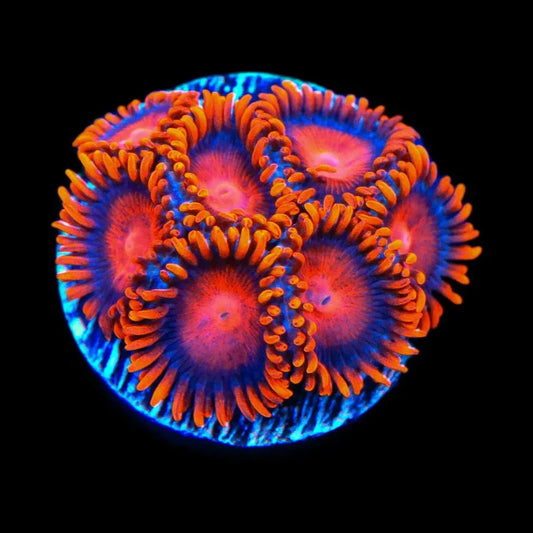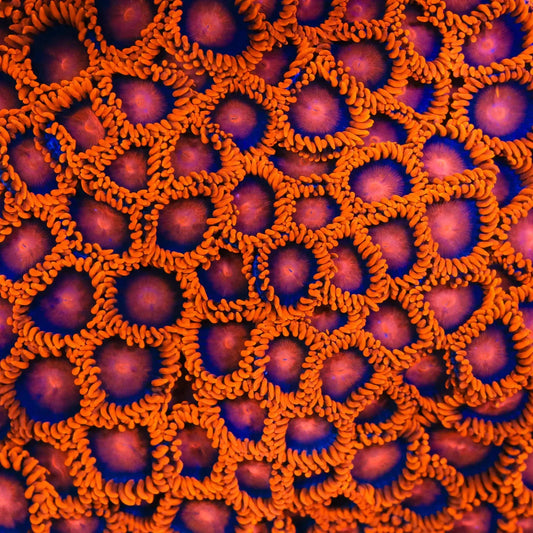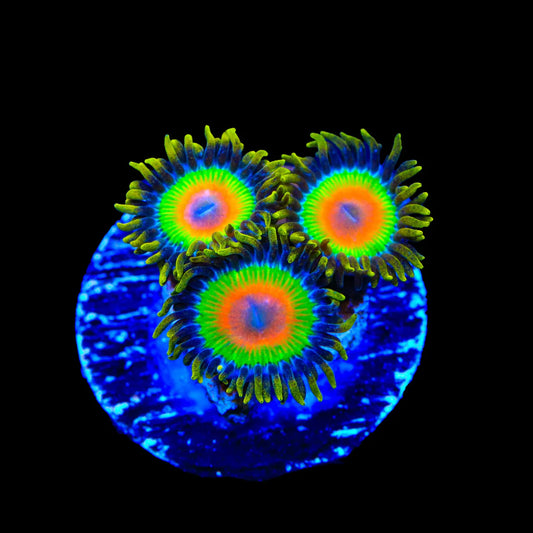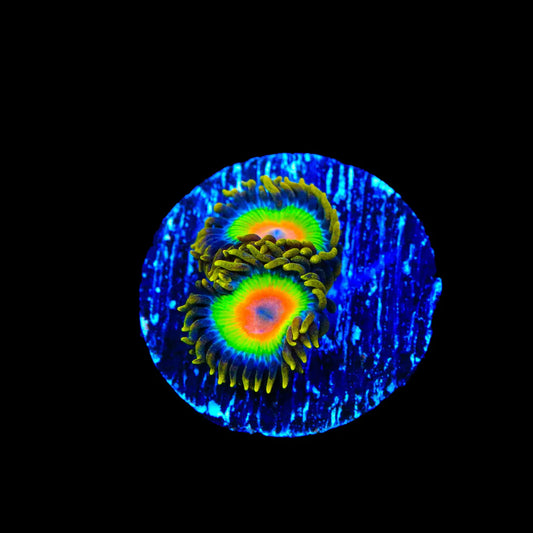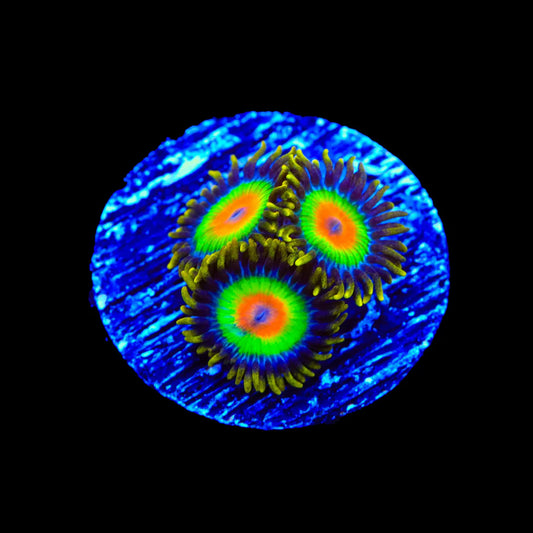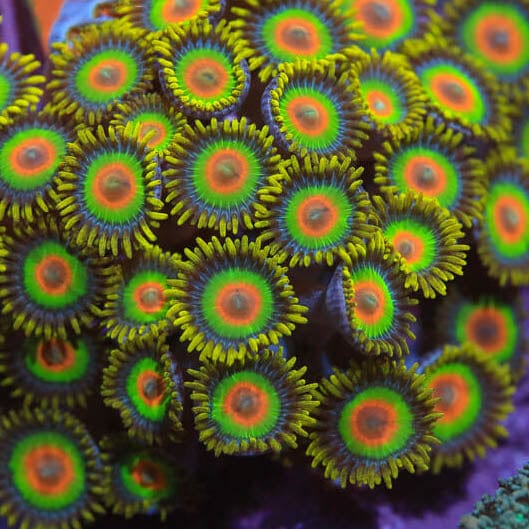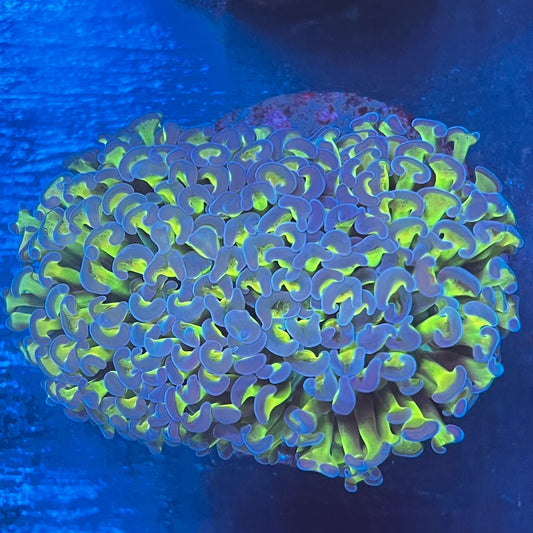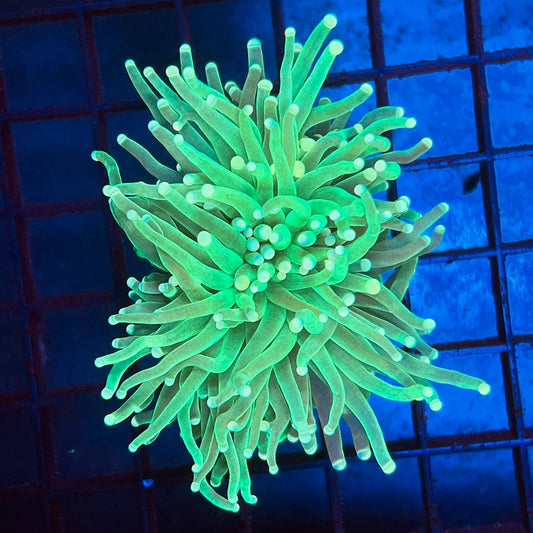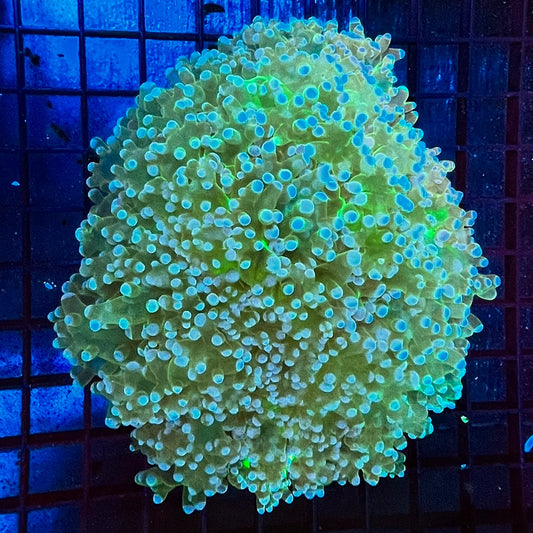- Home
- All Products
- Blue Moon Chalice
Blue Moon Chalice
Blue Moon Chalice
Couldn't load pickup availability
Coppertone Branching Hammer
Diablo Goniopora
This chalice grows very similar to a plating Montipora and takes on a blue color with a purple rim in low light. Chalice frags are between 1-2" in diameter.
Description
Description
CHALICE CARE
Chalice Corals are a broad collection of corals that are loosely jumbled together. Several different genera of corals are represented ranging from Echinopora, Oxypora, Mycedium, and even Lithophyllon. As such, care requirements are going to be generalized more than other corals because these are very different corals that all get lumped in together. Please see below for more care tips for Chalice Corals
Size & Care Requirements
Size & Care Requirements
LIGHTING
It is difficult to nail down a perfect lighting recommendation for this category because chalice corals are a large conglomerate of different coral genera. For this reason, moderate lighting of around 100 PAR is recommended for best coloration and overall health. More intense light can sometimes be tolerated but typically these corals do not fare well under extremely intense light (over 400 PAR). If not provided proper lighting, their colors may fade depending on the species of chalice coral. Chalice corals tend to have some of the most impressive fluorescence in the reef keeping hobby which can be best viewed under actinic LED's. The Chalices we grow here at Tidal Gardens look best in the winter when light is less intense. In the summer they tend to have a more muted appearance but will return to more attractive coloration once in a stable home reef aquarium.
Low Light
Low light translates to about 30-50 PAR
Medium Light
Medium Light is between 50-150 PAR
High Light
High Light is anything over 150 PAR
WATER FLOW
Moderate water movement is recommended. Flow that is too low can allow detritus to settle on the colonies which creates dead spots. Flow that is too strong may knock a chalice over because the shape of the colony acts as a sail that can catch the water current.
FEEDING
Chalice coral relies heavily on the products of their zooxanthellae, but are surprisingly one of the most aggressive eaters. We have tried feeding it a number of different types of food ranging from frozen foods to pellet foods. Chalices do not have pronounced polyp extension so it never appears that they are eating.
PROPAGATION
This genus for the most part has been propagated extensively in captivity and is an excellent candidate for aquaculture. Chalices are diverse and some varieties propagate better than others. In our experience, cutting colonies into large sections and allowing them to heal before cutting them into frag sized pieces, results in the best survival rates.
ACCLIMATION
Proper acclimation is extremely important considering the stress imposed on the animals by the shipping process.
Additional Info
Additional Info
LOCATION
Indo-Pacific - Chalices are found all over the islands of the Indo-Pacific including Fiji, Tonga, Solomon Islands, and the Great Barrier Reef.

Most Popular
-
Hawaii Yellow Tang
Regular price $399.99Regular priceUnit price / per -
Achilles Tang
Regular price $449.99Regular priceUnit price / per -
Atlantic Doctor Tang Fish
Regular price $349.99Regular priceUnit price / per -
Sohal Tang
Regular price $749.99Regular priceUnit price / per -
Tomini Tang
Regular price $129.99Regular priceUnit price / per
Stock Up On Popular Dry Goods
-
Pac Pods Copepod Concentrate (16 oz)
Regular price $58.24Regular priceUnit price / per -
Red Sea Reef Foundation C Magnesium (Mg) Supplement, 1000ml - Maintains Magnesium Balance for Healthy Corals in Marine & Reef Aquariums
Regular price $34.00Regular priceUnit price / per -
Red Sea Reef Foundation B Alkalinity (KH) Supplement, 5 L - Boosts Carbonate Levels for Strong Coral Skeletons in Reef & Marine Aquariums
Regular price $129.00Regular priceUnit price / per -
Red Sea Reef Energy Plus 500ml (AB+) All in One Coral Food for Saltwater Aquarium Marine Reef Tanks | Food for Soft, LPS, SPS, and Non-Photosynthetic Corals
Regular price $39.00Regular priceUnit price / per -
Phyto-Feast Live, 16 oz Bottle
Regular price $44.99Regular priceUnit price / per -
Oyster Feast Egg & Tissue Mix (6 oz) – Reef Nutrition
Regular price $36.62Regular priceUnit price / per
You May Also Like
-
Bam Bam Zoanthids Coral
Regular price $92.99Regular priceUnit price / per -
Rasta Zoanthids Coral
Regular price $84.99Regular priceUnit price / per -
Wall Hammer
Regular price $129.99Regular priceUnit price / per$109.99Sale price $129.99 -
Green Torch
Regular price $125.99Regular priceUnit price / per$129.99Sale price $125.99Sale -
Frog Spawn Colony
Regular price $279.99Regular priceUnit price / per$349.99Sale price $279.99Sale -
Diablo Goniopora
Regular price $200.00Regular priceUnit price / per
